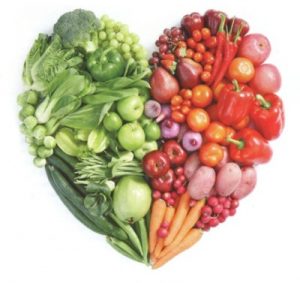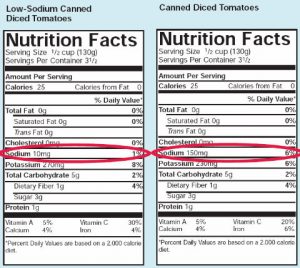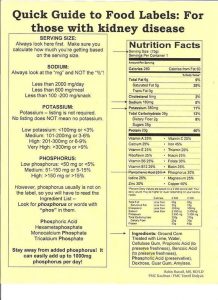Dietary Information
The kidneys are responsible for maintaining the proper levels of important substances in our bodies. The most important ones include potassium, sodium, phosphate and fluid (water). As kidney function declines, the body’s ability to eliminate these does as well. This can result in a dangerous buildup of any or all of these substances. Your nephrologist (kidney doctor) will advise you regarding any dietary restrictions you may need to follow. The items listed below are intended for patients who have been instructed to restrict their intake of potassium, sodium, phosphate or fluids. Also listed below is information about protein intake and dietary information for patients with kidney stones. Please note that this information is only to supplement that which you have been provided by your physician.
Meet with our Renal Dietitian, Tamzin Marchese, R.D., CD-N, and learn how you may protect your kidneys with diet and nutrition. Get your questions answered by a Kidney Dietitian Specialist!
Phone: 203-787-0117, press 0
Fax: 203-777-3559
“I have kidney disease, diabetes, and heart problems. What can I eat?”
“Why is salt bad for my kidneys?”
“Can I drink soda?”
“How do I control my potassium level?”
Sodium
Sodium’s role in the body:
Sodium is one of the body’s major electrolytes, which control the fluids going in and out of the body’s tissues and cells, and contributes to:
- Regulating blood pressure and blood volume
- Helping transmit impulses for nerve function and muscle contraction
- Regulating the acid-base balance of blood and body fluids
How sodium affects people with kidney disease:
Although sodium is essential for the body functions, excess sodium can be harmful for people with kidney disease because your kidneys cannot eliminate additional sodium and fluid from your body. As sodium and fluid buildup in your tissues and bloodstream, your blood pressure increases and can cause more damage to unhealthy kidneys. This damage further reduces kidney function, resulting in even more fluid and waste build up in the body.
Sodium and Our Diet:
Sodium is a part of salt and is found in many canned, packaged, and “fast” foods, as well as condiments, seasonings, and meats.
How Much Sodium Should I Eat Every Day?
Most people need to eat less sodium than they are eating. Aim for less than 2,000 milligrams of sodium each day. Much of the sodium you eat does not come from a salt shaker, but rather is added to the prepared foods you buy at the store or at restaurants.
Foods Lower in Sodium:
- Fresh or frozen fruits and vegetables
- Rice, noodles
- Cooked cereal without added salt
- Fresh meat, poultry, seafood
- Low-fat, low-sodium cheese
- Unsalted nuts
- Low- and reduced-sodium frozen dinners, peanut butter, salad dressings
- Air-popped popcorn
Foods Higher in Sodium:
- Bacon, corned beef, ham, hot dogs, luncheon meat, sausage
- Bouillon, canned, and instant soups
- Boxed mixes, like hamburger meals and pancake mix
- Canned beans, chicken, fish and meat
- Canned tomato products, including juice
- Canned and pickled vegetables, vegetable juice
- Cottage cheese
- Frozen meals
- Frozen vegetables with sauce
- Olives, pickles, relish
- Pretzels, chips, crackers, salted nuts
- Salt and salt seasonings, like garlic salt
- Seasoning mix and sauce packets
- Soy sauce
- Salad dressings, bottled sauces, marinades
- Some ready-to-eat cereals, baked goods, breads
- Ready-to-eat boxed meals and side dishes
How Do I Lower the Sodium in My Diet?
- Buy fresh foods more often.
- Cook foods from scratch, instead of eating prepared foods, “fast” foods, frozen dinners, and canned foods that are higher in sodium.
- Use spices, herbs, and sodium-free seasonings in place of salt. Check with your healthcare provider about using salt substitutes.
- Rinse canned vegetables, beans, meats, and fish with water to remove extra sodium.
- Always read the Nutrition Facts label to compare foods. Choose foods with the lowest Percent Daily Value (%DV) for sodium. The %DV lets you see if a food is high or low in sodium. 5% or less is low and 20% or more is high.
- Check the label on fresh meats and poultry. Sodium additives can be used to make meat last longer.
- Look for foods labeled: sodium free, salt free, very low sodium, low sodium, reduced or less sodium, light in sodium, no salt added, unsalted, and lightly salted.
Helpful Links:
Eating Right for Chronic Kidney Disease
Guide to Low-Sodium Foods for the Kidney Diet
Potassium
Potassium’s Role in the Body
Potassium is a common mineral which can be found in many foods, and it plays an important role in keeping the heartbeat regular and maintaining proper muscle function. Healthy kidneys can keep a normal potassium level in body. However, for CKD patients, their kidneys are damaged and they fail to excrete excess potassium in the body, so the potassium will build up in blood and cause a high potassium level. When patients have a high potassium level, they may feel weakness, numbness and tingling. Most importantly, if the potassium level is in a dangerous level, patients may have irregular heartbeat or a heart attack, which may even cause a death.
Foods are considered low in potassium if they contain 200 milligrams (mg) or less per serving.
Some low-potassium foods include:
- berries, such as strawberries and blueberries
- apples
- grapefruit
- pineapple
- cranberries and cranberry juice
- cauliflower
- broccoli
- eggplant
- green beans
- white rice
- white pasta
- white bread
- salmon
Foods to limit or avoid:
Foods are considered high in potassium if they contain more than 200 mg per serving. These should be eaten in very small quantities, or avoided completely.
Limit high-potassium foods such as:
- bananas
- avocados
- raisins
- prunes and prune juice
- oranges and orange Juice
- tomatoes, tomato juice, and tomato sauce
- lentils
- spinach
- Brussels sprouts
- split peas
- potatoes (regular and sweet)
- pumpkin
- dried apricots
- brown or wild rice
- whole wheat products, including pasta and bread
- milk
- bran products
- low-sodium cheese
- nuts
- beef
- chicken
- tuna
People with functioning kidneys need around 4,700 mg of potassium in their daily diet. However, people with chronic kidney disease should consume much less (around 1,500 to 2,700 mg each day).
Blood test will determine your monthly level of potassium millimoles per liter of blood (mmol/L).
The three levels are:
- Safe zone: 3.5 to 5.0 mmol/L
- Caution zone: 5.1 to 6.0 mmol/L
- Danger zone: 6.0 mmol/L or higher
Helpful Links:
Potassium: Tips for People with Chronic Kidney Disease
Phosphorous
Phosphorous and its Role
Phosphorus is a mineral found in the body and about 85% of the phosphorus in the body is in bones. Phosphorus is the body’s next most abundant mineral after calcium. The body uses phosphorus to:
- form strong bones and teeth
- maintain a normal pH balance
- get oxygen to tissues
- create energy
- change protein, fat and carbohydrate into energy
- develop connective tissues and organs
- move muscles
- produce hormones
- use B vitamins
When you have CKD, phosphorus can build up in your blood, making your bones thin, weak, and more likely to break. It can cause itchy skin, and bone and joint pain. Most people with CKD need to eat foods with less phosphorus than they are used to eating. Your health care provider may talk to you about taking a phosphate binder with meals to lower the amount of phosphorus in your blood.
Foods Lower in Phosphorus:
- Fresh fruits and vegetables
- Corn and rice cereals
- Rice milk (not enriched)
- Light-colored sodas/pop
- Breads, pasta, rice
- Home-brewed iced tea
Foods Higher in Phosphorus:
- Meat, poultry, fish
- Bran cereals and oatmeal
- Dairy foods
- Colas
- Beans, lentils, nuts
- Some bottled iced tea
How Do I Lower Phosphorus in My Diet?
- Know what foods are lower in phosphorus.
- Eat smaller portions of foods high in protein at meals and for snacks. ◦Meat, poultry, and fish: A cooked portion should be about 2 to 3 ounces or about the size of a deck of cards.
- Dairy foods: Keep your portions to 1/2 cup of milk or yogurt, or one slice of cheese.
- Beans and lentils: Portions should be about 1/2 cup of cooked beans or lentils.
- Nuts: Keep your portions to about 1/4 cup of nuts.
- Eat fresh fruits and vegetables–if you have not been told to watch your potassium.
- Many packaged foods have added phosphorus. Look for phosphorus, or for words with PHOS, on ingredient labels, like the one below
Helpful Links:
Protein
Why Is Protein Important for People with CKD?
When your body uses protein, it produces waste. This waste is removed by the kidneys. Too much protein can make the kidneys work harder, so people with CKD may need to eat less protein.
Animal protein includes all of the building blocks that your body needs. Plant proteins need to be combined to get all of the building blocks that your body needs.
How Do I Eat the Right Amount of Protein?
Your dietitian will tell you what amount and types of protein are right for you. Here is some general information about protein types and serving sizes:
- Eat smaller portions of meat and dairy. This will also help you lower the amount of phosphorus in your diet, because phosphorus is found in meat and dairy foods.
- Meat, poultry, and fish: A cooked portion should be about 2 to 3 ounces or about the size of a deck of cards.
- Dairy foods: A portion is ½ cup of milk or yogurt, or one slice of cheese.
- Plant proteins should make up the rest of the protein that you eat. A serving is:
- ½ cup of cooked beans
- ¼ cup of nuts
- a slice of bread
- ½ cup of cooked rice or noodles






